Lane County’s forests being whittled down
By Roy Keene and Dominick DellaSala
Posted Jun 13, 2019 at The Register Guard
The Shotcash BLM timber sale would clear cut some 1,200 acres of ecologically healthy, still-growing, 60-80 year old timber within the heavily logged Mohawk River drainage. In a watershed checkerboarded with thousands of acres of clear cuts and almost entirely depleted of older forests, the BLM claims it needs more seedling plantations. We think this is a bad idea.
In its 1957 forest inventory, the United States Forest Service reported Lane County having a sawtimber volume of 97 billion board feet. Its 2001-2010 inventory reported only 64 billion board feet, a 34% decline. In the last half century of so-called “sustained yield management,” 33 billion board feet of Lane’s timber has been liquidated. The 2010 inventory shows 83% of the county’s remaining timber volume vested in federal forests. Having consumed most of their mature timber, Lane County’s mills now press federal lands. The BLM seems eager to accommodate the county at the public’s expense.
Roadless areas are nature’s climate solutions
Pristine areas must protected from relentless development
Originally published May. 29, 2019 8:00 p.m.at the San Francisco Examiner
 The 2018 report of the Intergovernmental Panel on Climate Change, the Alliance of World Scientists, and #Scientists4Future all warn that if we do not transition away from fossil fuels quickly, climate change will threaten civilization itself in the coming decades. Scientists are now saying that pristine areas, like roadless areas and unlogged forests, can buy us time as we transition to a carbon-free economy but only if protected from relentless development.
The 2018 report of the Intergovernmental Panel on Climate Change, the Alliance of World Scientists, and #Scientists4Future all warn that if we do not transition away from fossil fuels quickly, climate change will threaten civilization itself in the coming decades. Scientists are now saying that pristine areas, like roadless areas and unlogged forests, can buy us time as we transition to a carbon-free economy but only if protected from relentless development.
Unfortunately, the fate of millions of acres of roadless areas in Alaska and Utah is now at risk from the Trump administration’s efforts to upend one of the nation’s landmark conservation achievements – the Roadless Area Conservation Rule of 2000. This is coming at a time when we need every wild place to avoid an unprecedent global crisis of 1 million species extinctions, as the authoritative Intergovernmental Science-Policy Platform on Biodiversity and Ecosystem Services recently warned.
Anyone in the Bay Area who cares about wild spaces ought to be alarmed by the pending extinction crisis and the administration’s efforts to usher in clearcut logging and road building in Alaska’s coastal temperate rainforests and Utah’s roadless forests. Here’s why.
In-the-Blink-of-An Eye We Save Humanity from Itself
“Don’t it always seem to go That you don’t know what you’ve got ‘Till it’s gone”
Joni Mitchell, Big Yellow Taxi (1970)
 I was just 14 when Big Yellow Taxi struck an emotional chord in me. Nearly a half century later, these words matter more to our own survival than any time in human history. This May, carbon emissions hit an all-time high as temperature gauges near the Arctic Circle in northwest Russia recorded the unthinkable: 87 degrees F when it’s supposed to be in the 50s! Perhaps, even worse, the Intergovernmental Science-Policy Platform on Biodiversity and Ecosystem Services released findings that 1 million species will soon go the way of the dodo, as humanity draws down more of its share of the planet’s life-giving systems. This is a crisis of immense proportions and most of humanity really won’t know what we got till it’s gone.
I was just 14 when Big Yellow Taxi struck an emotional chord in me. Nearly a half century later, these words matter more to our own survival than any time in human history. This May, carbon emissions hit an all-time high as temperature gauges near the Arctic Circle in northwest Russia recorded the unthinkable: 87 degrees F when it’s supposed to be in the 50s! Perhaps, even worse, the Intergovernmental Science-Policy Platform on Biodiversity and Ecosystem Services released findings that 1 million species will soon go the way of the dodo, as humanity draws down more of its share of the planet’s life-giving systems. This is a crisis of immense proportions and most of humanity really won’t know what we got till it’s gone.
Every single species on this planet is a freak of the Universe. We were born out of a Cosmic explosion billions of years ago triggering swirling star-dust clouds and Cosmic debris that eventually coalesced into this amazing and highly improbable (unique) blue-ball-of life.
With blatant disregard for the great Mystery in all this, we face an ultimatum.
Tall and old or dense and young: Which kind of forest is better for the climate?
- Scientists say reforestation and better forest management can provide 18 percent of climate change mitigation through 2030. But studies appear to be divided about whether it’s better to prioritize the conservation of old forests or the replanting of young ones.
- A closer look, however, reconciles these two viewpoints. While young forests tend to absorb more carbon overall because trees can be crowded together when they’re small, a tree’s carbon absorption rate accelerates as it ages. This means that forests comprised of tall, old trees – like the temperate rainforests of North America’s Pacific coast – are some of the planet’s biggest carbon storehouses.
- But when forests are logged, their immense stores of carbon are quickly released. A study found the logging of forests in the U.S. state of Oregon emitted 33 million tons of CO2 – almost as much as the world’s dirtiest coal plant.
- Researchers are calling on industry to help buffer climate change by doubling tree harvest rotations to 80 years, and urge government agencies managing forests to impose their own harvest restrictions
Read the full article by Paul Koberstein & Jessica Applegate at Mongabay.
Rep. Haaland statement on wildfire risks
Rep. Haaland (D-NM) asks congress to focus on home protection and climate change to address wildfire risks. Read the full statement.
Conservation Today talks wildfires with Dr. Dominick DellaSala
Dr. Dominick DellaSala talks about fire, including how wildfire is beneficial to our ecosystems. Does thinning help reduce fire? Does it help the forest? It depends. In any case, Dr. DellaSala explains why salvage logging a burned forests is so destructive. Dr. DellaSala also explains the relationship between climate change and forests, and the carbon capture and release of a forest. Finally, Dominick summarizes the green-new-deal from congress.
Scientists sound the alarm on Earth Day
Originally published on April 21, 2019 in the Medford Mail Tribune
 By Dominick A. DellaSala, William J. Ripple and Franz Baumann
By Dominick A. DellaSala, William J. Ripple and Franz Baumann
Another Earth Day is here and it’s time to see how the planet’s life-support systems are doing and what it means for Oregonians.
Since clean, renewable energy solutions are becoming increasingly available, we remain hopeful. Given the risk, though, that they might not be deployed at scale, and because the planet is creeping dangerously close to a tipping point, it’s hard not to be alarmed.
For decades, scientists have been monitoring the planet’s systems like the warning lights on a car’s dashboard. We scan satellite images of humanity’s growing ecological footprint on the world’s forests, rivers, and oceans that is setting the stage for the biggest extinction event since the dinosaurs went extinct. We use thousands of weather stations to track rising global temperatures and super-computers that forecast catastrophic impacts awaiting future generations if we ignore these telltale signs.
Sounding the alarm on Earth Day
originally published April 21, 2019 at OregonLive
By Dominick A. DellaSala, William J. Ripple and Franz Baumann
Another Earth Day is here and it’s time to check on the planet, our climate, and what it means for Oregonians. While we remain hopeful that climate change is solvable if we act now, it’s hard not to be alarmed.
For decades, scientists have been monitoring the planet’s life-support systems like the warning lights on a car’s dashboard. We scan satellite images of humanity’s unprecedented ecological footprint on forests, rivers, and oceans. We use thousands of weather stations to track rising temperatures and super-computers to forecast impacts.
In 1992, we joined 1,700 scientists in issuing a warning that “a great change in our stewardship of the Earth and the life on it is required if vast human misery is to be avoided.” In 2017, more than 21,000 scientists from 184 countries issued a second warning that conditions had worsened and time was running out.
Defending America’s ‘Climate Forest’
The Tongass stores hundreds of millions, if not over a billion, tons of carbon, keeping the heat-trapping element out of the atmosphere.
Conservation scientist Dominick DellaSala of the Geos Institute knows all too well the importance of the Tongass for fighting climate change. “If you hug a big tree, you’re actually hugging a big stick of carbon that has been taking up and storing up carbon for centuries,” he says.
Scientists have long understood that logging old-growth forests triggers a cascade of negative effects on wildlife, eroding the biodiversity of places like the Tongass. More recently, DellaSala and research collaborators have shown that old-growth logging worsens climate change.
Click here to read the full article by Rebecca Bowe in the spring 2019 issue of Earthjustice magazine.
Dotty Owl: Born in Fire
Dotty Owl travels back in time and visits young forests emerging from the charcoal after intense wildfire. Forest fires burn at varying severities leaving a mosaic pattern on the landscape. While burned forests appear stark immediately after a fire, one of the best kept secrets of fire is how quickly the young forests emerge and thrive after fire. Join Dotty and see with your own eyes how many plants and animals thrive in burned forests.
Watch Episode 1 here.
Latest News
Stay Updated!
Sign up to stay updated on our current initiatives and receive information you can use to build resilience in your community.

 Arsum is the Senior Adaptation and Coastal Resilience Specialist for the National Wildlife Federation’s Southcentral Region. In this role, she advances climate adaptation efforts, with a focus on nature-based approaches to address the impacts of climate change and extreme events across the Gulf region. She has authored and co-authored numerous publications on climate impact assessments and adaptation solutions. Additionally, she regularly participates in state-based coastal resilience and hazard mitigation planning across the Gulf, collaborating with regional and local stakeholders.
Arsum is the Senior Adaptation and Coastal Resilience Specialist for the National Wildlife Federation’s Southcentral Region. In this role, she advances climate adaptation efforts, with a focus on nature-based approaches to address the impacts of climate change and extreme events across the Gulf region. She has authored and co-authored numerous publications on climate impact assessments and adaptation solutions. Additionally, she regularly participates in state-based coastal resilience and hazard mitigation planning across the Gulf, collaborating with regional and local stakeholders.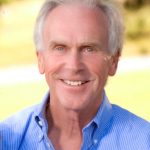 Frank is the former President of the Reinsurance Association of America. Frank currently serves on the Advisory Board of the OECD’s International Network for the Financial Management of Large-Scale Disasters, the RAND Center on Catastrophic Risk Management and Compensation, and the University of Cincinnati’s Carl H. Lindner III Center for Insurance and Risk Management Advisory Board.
Frank is the former President of the Reinsurance Association of America. Frank currently serves on the Advisory Board of the OECD’s International Network for the Financial Management of Large-Scale Disasters, the RAND Center on Catastrophic Risk Management and Compensation, and the University of Cincinnati’s Carl H. Lindner III Center for Insurance and Risk Management Advisory Board.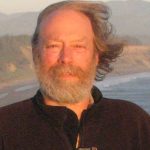 Jim is a multilingual world traveler. Based in Bavaria during the 1970s, Jim spent most of this period in India, Afghanistan and Nepal, where he founded and operated a charitable medical clinic serving Tibetan Refugees. He settled in Oregon in 1983 on a forested ranch in the Umpqua National Forest.
Jim is a multilingual world traveler. Based in Bavaria during the 1970s, Jim spent most of this period in India, Afghanistan and Nepal, where he founded and operated a charitable medical clinic serving Tibetan Refugees. He settled in Oregon in 1983 on a forested ranch in the Umpqua National Forest.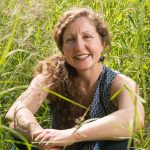 Dr. Micah Hahn is an Associate Professor of Environmental Health in the Institute for Circumpolar Health Studies at the University of Alaska-Anchorage. She received her joint PhD in Epidemiology / Environment and Resources from the University of Wisconsin-Madison and her MPH in Global Environmental Health from Emory University. Subsequently, she was a postdoctoral fellow for the CDC Climate and Health Program, and in this position worked collaboratively with the CDC Division of Vector-borne Diseases and the National Center for Atmospheric Research. Her research focuses on understanding the health impacts of climate change and working with communities to develop locally-relevant adaptation and resilience-building strategies. Dr. Hahn is also on the Management Team of the Alaska Climate Adaptation Science Center.
Dr. Micah Hahn is an Associate Professor of Environmental Health in the Institute for Circumpolar Health Studies at the University of Alaska-Anchorage. She received her joint PhD in Epidemiology / Environment and Resources from the University of Wisconsin-Madison and her MPH in Global Environmental Health from Emory University. Subsequently, she was a postdoctoral fellow for the CDC Climate and Health Program, and in this position worked collaboratively with the CDC Division of Vector-borne Diseases and the National Center for Atmospheric Research. Her research focuses on understanding the health impacts of climate change and working with communities to develop locally-relevant adaptation and resilience-building strategies. Dr. Hahn is also on the Management Team of the Alaska Climate Adaptation Science Center. Michael is a former Founding Principal of Resilient Cities Catalyst, a global non-profit helping cities and their partners tackle their toughest challenges. He is currently the Executive Director of Climate Resilience Academy at the University of Miami.
Michael is a former Founding Principal of Resilient Cities Catalyst, a global non-profit helping cities and their partners tackle their toughest challenges. He is currently the Executive Director of Climate Resilience Academy at the University of Miami.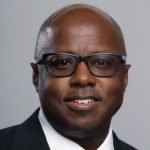 Dr. Quintus Jett is a consultant, educator, and strategist for public causes. He has a doctorate in Organizations & Management from Stanford University, and a two-decade faculty career which spans schools, departments, and programs of business, engineering, liberal studies, divinity, and public and nonprofit management. Following Hurricane Katrina in 2005, Dr. Jett launched a volunteer project in New Orleans, which enlisted residents, students from over a dozen colleges and universities, and hundreds of others to field map the city’s Gentilly district, Lower Ninth Ward, and New Orleans East. Dr. Jett is an innovator in higher education, bridging the divide between academic research and the other priorities of the modern university, including student access and diversity, community engagement, and providing foundations for life-long learning in today’s rapidly changing world.
Dr. Quintus Jett is a consultant, educator, and strategist for public causes. He has a doctorate in Organizations & Management from Stanford University, and a two-decade faculty career which spans schools, departments, and programs of business, engineering, liberal studies, divinity, and public and nonprofit management. Following Hurricane Katrina in 2005, Dr. Jett launched a volunteer project in New Orleans, which enlisted residents, students from over a dozen colleges and universities, and hundreds of others to field map the city’s Gentilly district, Lower Ninth Ward, and New Orleans East. Dr. Jett is an innovator in higher education, bridging the divide between academic research and the other priorities of the modern university, including student access and diversity, community engagement, and providing foundations for life-long learning in today’s rapidly changing world. Scott is Monfort Professor of Atmospheric Science at Colorado State University. He has written about 100 publications in the peer-reviewed climate literature, is a former editor of the Journal of Climate, and served for five years as founding Science Chair of the North American Carbon Program.
Scott is Monfort Professor of Atmospheric Science at Colorado State University. He has written about 100 publications in the peer-reviewed climate literature, is a former editor of the Journal of Climate, and served for five years as founding Science Chair of the North American Carbon Program. Linda has many years of experience in disaster preparedness and resilience. She has been an elected official on the Linn County Iowa Board of Supervisors, Chair of the Metropolitan Planning Organization, the East Central Iowa Council of Governments, the statewide Mental Health Developmental Disability and the Linn County Board of Health. Langston is a former president of the National Association of Counties (2013-2014).
Linda has many years of experience in disaster preparedness and resilience. She has been an elected official on the Linn County Iowa Board of Supervisors, Chair of the Metropolitan Planning Organization, the East Central Iowa Council of Governments, the statewide Mental Health Developmental Disability and the Linn County Board of Health. Langston is a former president of the National Association of Counties (2013-2014).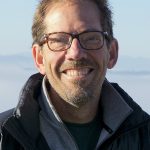 Ken works with families and organizations as a mediator, organizational consultant, trainer and facilitator. Along with his passion for helping people prepare for and reduce climate change, Ken also volunteers as a mediator through Mediation Works and is passionate about supporting youth through mentoring with Boys to Men of Southern Oregon.
Ken works with families and organizations as a mediator, organizational consultant, trainer and facilitator. Along with his passion for helping people prepare for and reduce climate change, Ken also volunteers as a mediator through Mediation Works and is passionate about supporting youth through mentoring with Boys to Men of Southern Oregon. Matthew is a retired high school teacher who was once honored as Oregon High School Social Studies Teacher of the Year. Before his teaching career he was in the restaurant business in Portland. He is also a lawyer who has been a member of the Oregon State Bar Association since 1980.
Matthew is a retired high school teacher who was once honored as Oregon High School Social Studies Teacher of the Year. Before his teaching career he was in the restaurant business in Portland. He is also a lawyer who has been a member of the Oregon State Bar Association since 1980. Andrea is the Resilience Policy Advisor for the North Carolina Office of Recovery and Resiliency. She works across state agencies and with local governments to increase the state’s resilience to the impacts of climate change.
Andrea is the Resilience Policy Advisor for the North Carolina Office of Recovery and Resiliency. She works across state agencies and with local governments to increase the state’s resilience to the impacts of climate change.